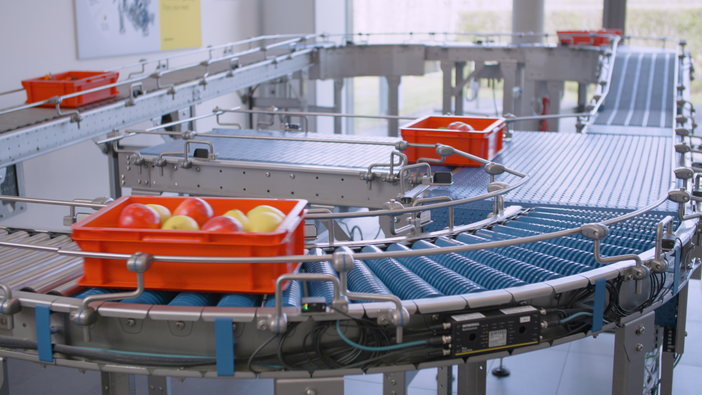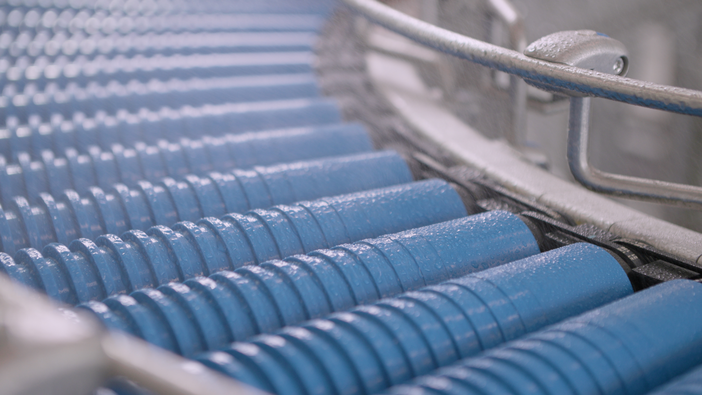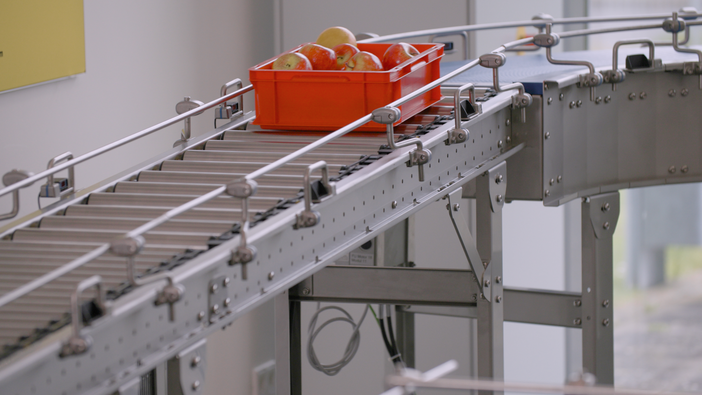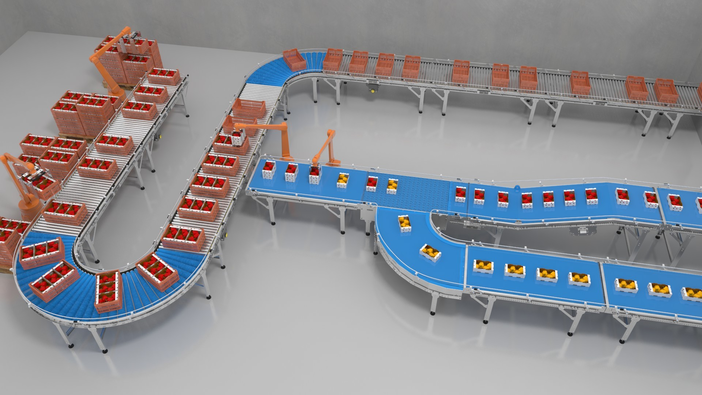Five overlooked food production Issues that quietly disrupt your packaging process
by Interroll on Jul 21, 2025 10:36:00 AM

Your packaging line looks busy. Machines are humming, crates are moving, and staff are on the floor doing what they do best. But if you dig beneath the surface, you might find that “busy” doesn’t always mean “efficient.” Uncover the hidden inefficiencies in your food packaging line that could be quietly undermining your productivity and profits.
In food packaging, speed and precision are everything. But what if your line is doing exactly what it's told, just not as efficiently as it could? Often, the biggest threats to productivity aren’t breakdowns or missed deadlines; they’re the slow, silent inefficiencies baked into the system. You might not see them at first glance, but over time, they sap output, inflate costs, and strain your team.
Here is an overview of the five most overlooked efficiency killers:
1. Uncontrolled accumulation
Crate pile-ups on conveyors might seem like isolated incidents, but they often point to deeper flow issues. When products bunch up, it can damage packaging, delay downstream operations, and increase the risk of rejected consignments.
The ideal solution is to design accumulation out of the process entirely. Zero Pressure Accumulation (ZPA) systems offer a way to prevent pile-ups by controlling the flow of packages. Adopting ZPA can significantly enhance your productivity by eliminating the need for manual intervention.
2. Lack of Overall Equipment Efficiency (OEE)
Overall Equipment Efficiency (OEE) might not always be top-of-mind, but even minor inefficiencies can cascade into significant productivity losses. In a food packaging line, which can involve up to 12 stages from picking to labeling, small delays add up quickly. Synchronizing each zone of the conveyor and automating manual adjustments can help you achieve smoother integration and reduce these inefficiencies.
3. Manual handling bottlenecks
In high-volume food packing plants, manual handling can create non-obvious bottlenecks. Workers repositioning crates, forklifts moving around, and manual handovers between conveyors are common. While your team may manage these tasks efficiently, they often mask underlying inefficiencies.
By analyzing how much of your crate flow depends on human timing and manual work, you can identify areas ripe for automation and redesign to minimize these hidden bottlenecks.
4. Unplanned maintenance and cleaning
All machines require maintenance, but unplanned downtime can be particularly disruptive. A single component failure can shut down the entire production line for hours or even days. Preventive maintenance is essential, but it doesn't cover unexpected issues like leaks, breakages, or contamination.
In many food packaging lines, older machinery is mixed with newer equipment, each requiring different levels of maintenance. Understanding how each maintenance task impacts overall performance is crucial. Building systems with easy maintenance access and adopting integrated solutions can help reduce downtime and improve efficiency.
5. Rigid layouts
Production lines are often built for specific purposes, but requirements can change over time. New customers, different products, or evolving regulations may necessitate changes in the layout. Rigid setups can make it difficult to adapt, leading to time and cost sinks. Building flexibility into your systems from the start can help you adapt to new needs without significant downtime.
Discover the sixth hidden killer in food production
While we've covered five significant issues that can disrupt your food production line, there is a sixth hidden killer that you might not have considered. This issue cuts across all the others and has a profound impact on the overall efficiency and longevity of your machinery.
Curious to find out what this sixth hidden killer is? Download our detailed guide to uncover this final piece of the puzzle.
Download our guide: The five hidden killers in your food production line ..and how to fix them
Eliminate your productivity killers
Think your food packaging line runs smoothly? Small inefficiencies can quietly add up to big losses. Get the guide and learn how to eliminate hidden inefficiencies — before they hit your bottom line.
You May Also Like
These Related Stories

How to minimize unplanned downtime in your food packaging line

Zero Pressure Accumulation: The Biggest Benefits for Food Packaging Lines


